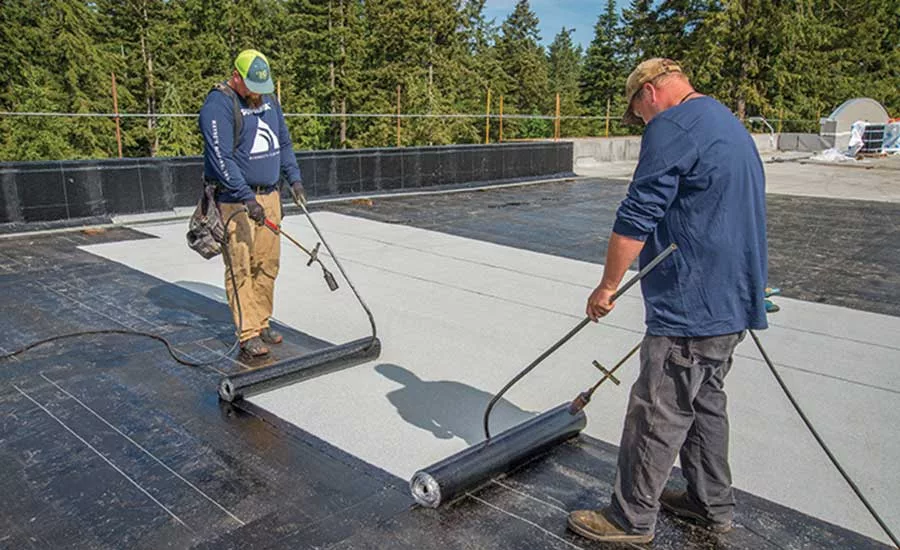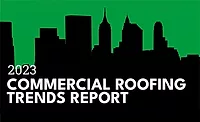Sponsored
Four Commercial Roofing Trends For 2019

As 2018 draws to a close, it’s a great time to identify what trends have been driving the commercial roofing industry in recent months
As 2018 draws to a close, it’s a great time to identify what trends have been driving the commercial roofing industry in recent months, then analyze them to find out how contractors, designers and other industry professionals can be best prepared to hit the ground running in 2019. We touched base with two industry veterans — SOPREMA USA’s Jeremiah Price, district sales manager, and Bryan Beth, Midwest regional manager — who work closely with roofing contractors, consultants, architects, engineers and designers across the country to find out what they are seeing and hearing. Despite the wide geographic regions these experts cover, their insights were nearly identical: There are several distinct themes commercial roofing professionals should keep an eye on in the new year and beyond.
Trend: Designing to Minimum Requirements
Across the country, designers, architects and engineers are overwhelmed by the number of choices they have to consider when putting together project specs. Roofing was often not covered in depth when these professionals were in school, yet complicated decisions must be made regarding material choices and application methods. Decisions are thus often being made based on what products meet ASTM and similar standards (which dictate minimum requirements for performance). Even more alarming, is the trend of designing assemblies based almost exclusively on warranty terms.
While this approach may seem reasonable on the surface, it can lead to suboptimal designs. As seasoned roofing professionals know, equivalent warranty terms do not dictate equal performance, and decisions need to be based on the specific factors of each job, including the building construction and environment. Roofing consultants sometimes intercede, but most jobs across the country do not involve consultants. Therefore, it’s often up to roofing contractors who frequently have a good understanding of proper material choice and redundant waterproofing design to influence these decisions when they encounter red flags on a project.
This trend of designing to minimum requirements has been pervasive in recent years, but it’s one that will ideally diminish moving into 2019 and beyond. While training and other education initiatives can help bridge some of the knowledge gaps around robust system design and the value of redundant waterproofing systems, there’s also a need to simplify the specification process for designers. To help find the right solution for each job, we also ensure every suggestion our experts make meets our “S.I.V.” criteria: Simplifying the spec, Improving performance, and adding Value to the owner.
Trend: Sustainability Definitions Expanding
On the topic of design choices, we have also seen demand for products meeting the traditional definition of sustainable — i.e., “green” design — remaining relatively strong through 2018. That said, conversations with roofing professionals and architects are also uncovering a desire for a different sort of sustainability. Professionals are looking at the environmental impact of their roofing design decisions throughout the life cycle of products and are seeking solutions that minimize waste that ultimately ends up in landfills. This is a hidden expense of short-term, low-cost designs, such as single-ply systems, that must be torn off, thrown away and replaced entirely, whereas a redundant multi-ply modified-bitumen design could be repaired and refreshed to last twice as long.
In 2019, we anticipate seeing an expanding awareness around the impact of roofing construction choices on landfills and more truly sustainable roofing lifecycle planning.
Trend: The Labor Shortage Continues
The ongoing labor shortage is a problem affecting not only installers, but every point in the commercial roofing industry’s supply chain. The economy is strong, and demand for talented roofing crews is simply outweighing the supply. Every contractor and design firm wants a healthy backlog of jobs, but delays are adding up. We are seeing projects slated for completion in 2018 now being pushed out to May of 2019 because there simply aren’t enough skilled laborers available to get the jobs done quickly.
Part of the problem is a depleted funnel of new workers coming into the roofing industry for a number of reasons — including a misperception that a roofing career is not a “professional job,” and students being pressured to attend college rather than pursuing a trade. There’s also a lack of knowledge within the industry around how to use certain products effectively, limiting which contractors are capable of carrying out specific jobs.
In general, SOPREMA sees training as a key means of overcoming inherent labor shortage problems. The company rolled out nationwide training and certification program via a network of training centers and on-site visits by training professionals to help contractors understand core principles of redundant waterproofing design. Part of that training includes product-specific usage practices to protect builders long-term. We’ve seen massive success with certification programs in Canada and now in the United States, recognizing that installer skill matters as much to a positive job outcome as the product does.
Through these training initiatives, roofing contractors are not only gaining important knowledge, but also a sense of pride in their professional competency as skilled workers. The labor shortage may continue to be a challenge through 2019, but there are steps that can be taken to mitigate its effects.
Trend: Embrace Problem-Solving Products
Driven in part by the labor shortage and other general challenges faced on commercial roofing jobsites, we’re seeing an increased use of products specifically designed for ease-of-use and improved efficiency with fewer skilled laborers.
While new product innovations are allowing contractors to get more done with less, applicators need to be comfortable with them and designers need to understand that these options exist. If their usage is to continue increasing in 2019, education will be required for all parties in the design and installation professions.
The Way Forward
Overall, the commercial roofing market is looking strong into 2019 and beyond — likely through 2021 or 2022, based on long-range project bookings we have seen. Demand is strong for commercial roofing services, and opportunities abound for contractors and architects who value ongoing education and make smart design choices. The challenge will be keeping up with the demand for the foreseeable future.
Looking for a reprint of this article?
From high-res PDFs to custom plaques, order your copy today!





